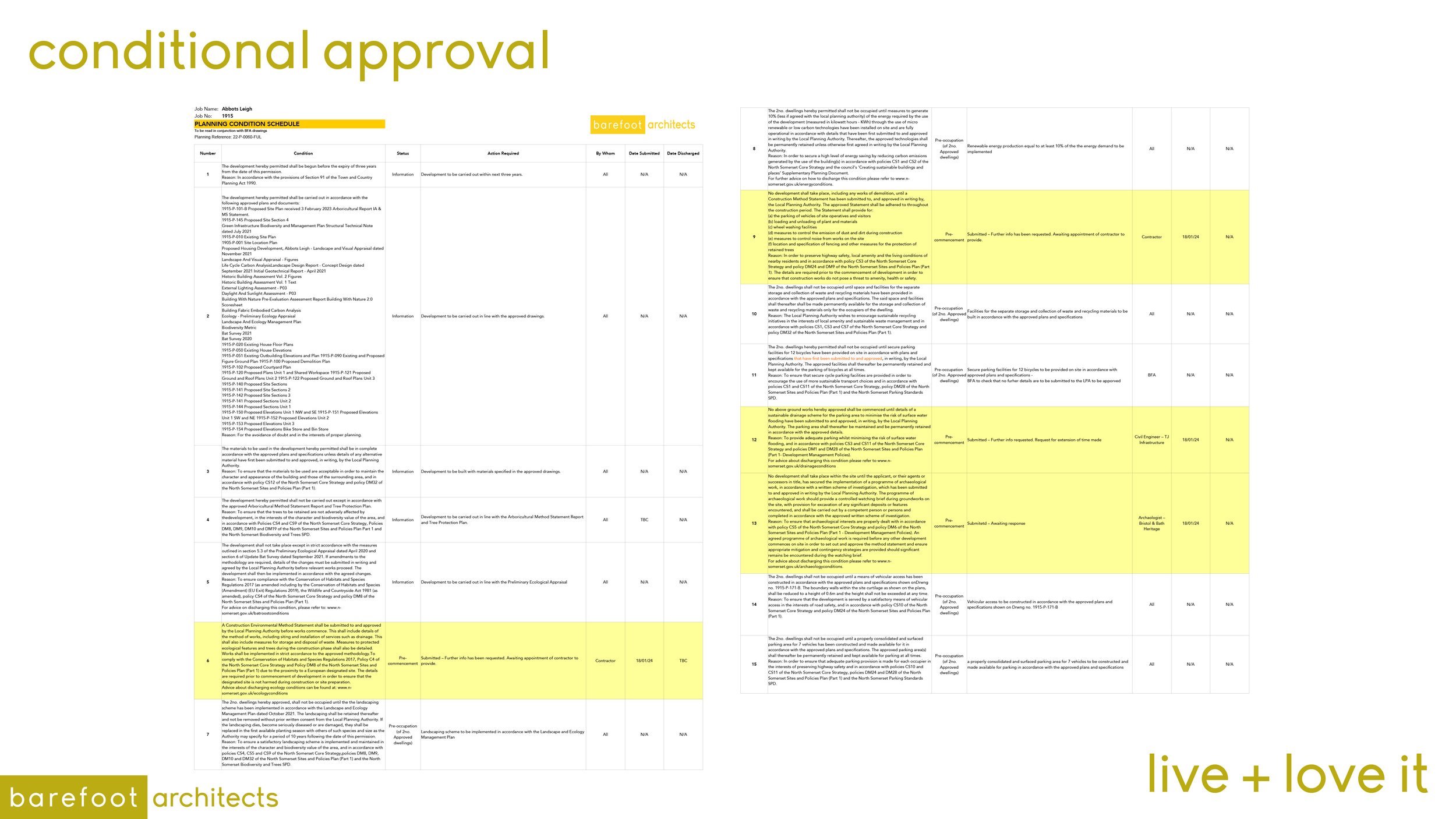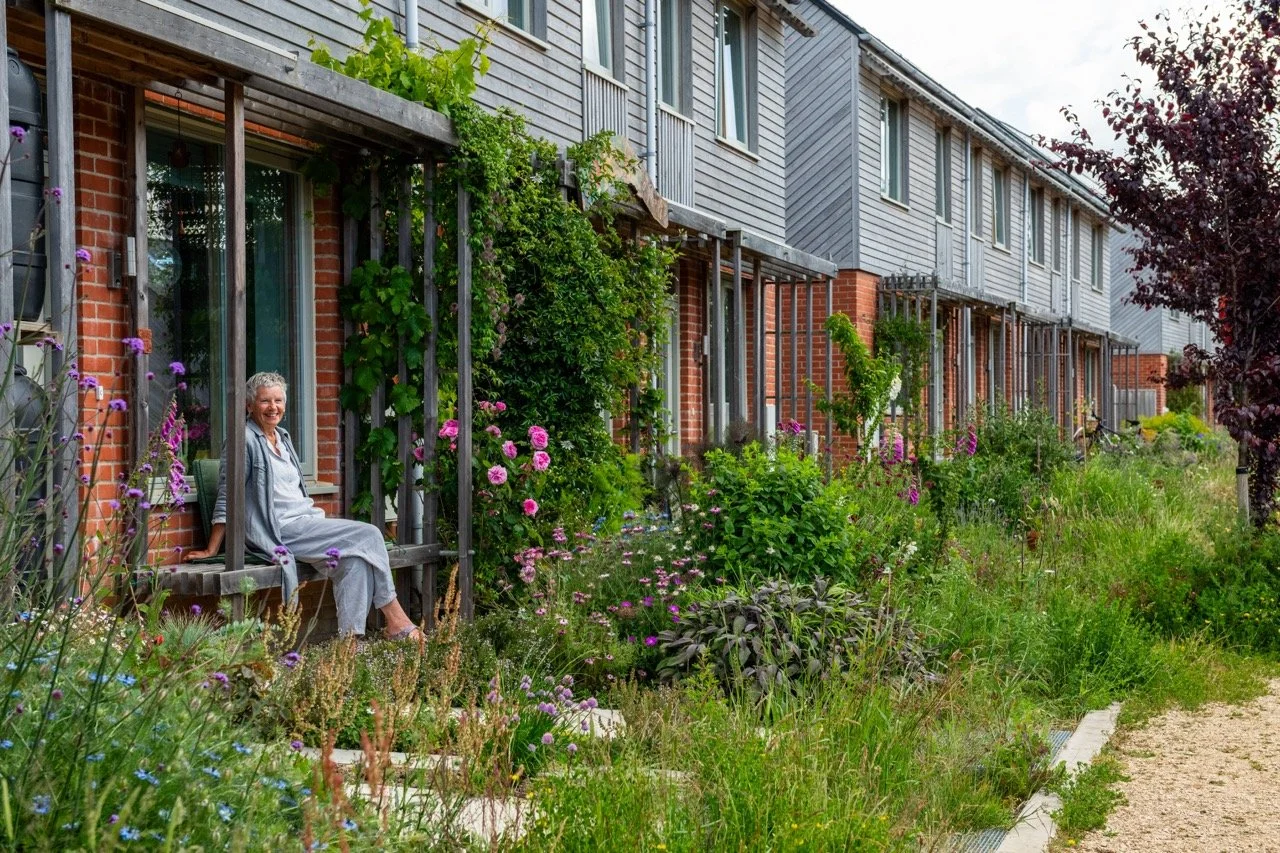‘Regenerative design’ is the simple idea that we can have a positive impact on the planet when we build.
it’s a holistic approach which aims to ensure a positive impact on all aspects of building; from the biodiversity and the health of its occupants, to the ecosystems affected by material supply chains and the wellbeing of the people extracting, processing and installing those materials.
it goes beyond sustainability to actively regenerate natural systems, and your project is a great place to start.
Regenerative design as an inspiring philosophy recognises that we are living in a world in which nature is depleted, and in rapid, catastrophic decline. It recognises that ‘sustainability’ is not good enough, that we need to do better than maintain a depleted world. The actions we take today can and must start to regenerate natural systems.
On this page we seek to explain some of the background to the idea of regenerative design - what it is, why it’s important, as well as the processes, standards, and systems we use to try and achieve it.
We offer a range of suggestions for how your project can incorporate the ideas of this approach in a practical way, and at any scale. Every project we undertake can be better, and achieve more, to the benefit and health of you, and the planet!
Scroll down for enquiry form
often, The way we build today is damaging and unsustainable. unfortunately the construction industry is one of the main contributors to climate change and ecosystem breakdown. we care, and want to do better!
Regenerative design is the simple idea that we can have a positive impact on this planet when we build. It recognises that we are living in a world in which nature is depleted and in rapid, catastrophic decline. It recognises that ‘sustainability’ is not good enough, we need to do better than maintain a depleted world. The actions we take today can and must start to regenerate natural systems. We must look at past and present construction techniques and their impact on future generations and make sure our children inherit a richer, healthier planet.
Developing regenerative design strategies is both an environmental and ecological imperative, and a cultural (planning) necessity. Seeking to correct the mistakes of our recent history, we must balance and synthesise the requirements of a fragile natural world, and complex bureaucratic systems within which building projects exist.
Many of our most regenerative design projects have been developed in the context of particularly sensitive sites - those in Areas of Outstanding Natural Beauty (AONB) and Green Belt. Whilst these sites demand an extremely rigorous approach to design that enhances a site, we believe that all projects have the potential to be developed within a regenerative design paradigm to the benefit of everyone and everything - win-win!
why is regenerative design important?
what are the benefits of regenerative design?
here is a list of things you can actively do by supporting a regenerative design approach to your project:
We can help to bring bird song and the hum of insects back to our gardens by creating new habitats in and around the buildings we build!
We can adapt, renovate and retrofit existing buildings rather than demolish and rebuild.
We can capture more carbon within the fabric of our buildings than is released by their construction by building with bio based materials such as timber, hemp, straw etc and avoiding carbon intensive materials like concrete, steel and plastics.
We can look carefully at our site to see what building materials are already there, such as earth, timber, or materials reclaimed from an existing building.
We can support ecologically rich woodlands in our area by building with native timber species, grown locally.
We can develop new ways to use waste materials.
We can design for circularity by making sure buildings can be dismantled and the materials either re-used or composted when no longer in use.
We can reduce the amount of energy needed to heat and cool our buildings through a fabric first approach, using lots of insulation, carefully solar orientation to capture heat from the sun as well as passive cooling though ventilation.
We can create more energy than we use on site through renewables such as solar panels and Air and Ground Source Heat Pumps.
We can help develop local, and global knowledge of ecological building techniques by sharing the process of building with as many people as possible.
We can ensure people develop strong relationships with the places they inhabit and foster a sense of stewardship through the use of inclusive and participative design and construction processes.
at each step of your project, we consider what we can do to assist the process to work towards the most regenerative outcome possible. This means thinking carefully about your brief, site, orientation, materials, design, team work, collaborators, research, standards and toolkits. we are constantly learning and working collaboratively with stakeholders including consultants, neighbours, planners, and politicians!

Diagram comparing the roots of a European beech and Norway spruce trees, displaying fungi and carbon flow underground, with accompanying text about sustainable landscape practices, soil, recycling, and building materials.

A report page with text on survey work on habitat, a map with marked survey sites, and four images of animals and insects. The text describes surveys for ecology, badger evidence, snail searches, and bat surveys. The map indicates survey locations with different symbols and colors. The images depict a badger, a rodent on a branch, snails, and a bat.

A presentation slide titled 'feasibility: design research' showing a photo of ground investigation work in a woodland area, a site plan with labeled points, a cross-section of soil layers, and a laboratory test result graph.

A site plan landscape design with trees, pathways, a building, parking area, and a road. The plan includes labeled areas for orientation and site optimization by Barefoot Architects.

Construction site with a large pile of gravel, wooden framework, scaffolding, and workers building a structure surrounded by trees.

A diagram illustrating a pre-application process for regenerative design, showing architectural plans for living and dining spaces with tree and house illustrations, and the question 'is regenerative design understood?' at the bottom.

A modern building integrated into a lush, green hillside with tall trees and dense vegetation, illustrating the concepts of spatial coordination, leadership, and teamwork in architecture inspired by Barefoot Architects.

Title slide of a presentation titled 'Standards Framework (BwN 2.0)' with a subtitle '12 standards: core, well-being, water, wildlife' and a background image of a park with cars, trees, and a bridge.

Diagram showing the stages of planning development for a building, with an exploded view of structural components and two side-by-side illustrations of the building's appearance in different weather conditions, highlighting increasing technical complexity.

Diagram showing the relationship between effort, power, and various local government planning authorities, centered around 'Your Project' in the middle, with concentric circles and arrows labeled with different agencies and the concepts of effort and power.

Document titled "conditional approval" with the logo of 'barefoot architects' at the top right corner. The document contains a detailed table with multiple rows and columns, and several entries highlighted in yellow. The footer shows the text "barefoot architects" on the left and "live + love it" on the right.

A presentation slide about architecture construction details. It features photographs of different building materials, a 3D architectural plan of a house, and a section drawing of the building. The slide has the title 'technical tender: keep attention' and the subtitle 'on your intentions,' with the company's name 'barefoot architects' at the bottom.

A 3D model of a building frame with orange wooden beams and red structural supports on a grey foundation, illustrating a disassembly design for minimizing site waste by Barefoot Architects.
regenerative community
Bridport Cohousing is as close to a purpose built regenerative community as we are aware of in the UK.
It adopts many principles of regenerative design and weaves them throughout the site strategy, car free streets, on site food production, sharing of resources, Photovoltaic community microgrid, low energy design, space for wildlife, and ecological enhancement features to the buildings and landscape.
The greatest joy of walking around the site is the sound of birds, the site of trees, and the calm sense of people talking, playing and living on the streets.
The spectacular AONB location demanded such a response, and the brave client group led this ambitious project with gusto and courage. It is a trailblazing example of the many benefits of regenerative design at the scale of a community housing project.
1
think about your brief carefully
Do you need to build anything new, or could re-organising, refurbishing and retrofitting your existing house give you what you need?
What might your project be able to create for birds, bats, insects, and invertebrates?
Can you build in such a way that little or no waste is created?
What design approach would you like to take to materials, any existing buildings, or the potential to re-use things as part of your project in line with principles of the circular economy?
Can you create energy through renewable technology such as solar panels or Air Source Heat Pumps?
Can you avoid or minimise the use of steel, concrete and plastics?
2
focus on the site design
Your project will be more than just a building! How it connects to the site and landscape is crucial.
Can it support a wider landscape network of features that have ecological benefits?
How could it become a catalyst to bring back more wildlife and nature to the site - perhaps in your garden, with a green roof, or through the use of bird or bat boxes?
Is the building located in the optimum position to minimise its impact on existing natural structures and features of the site - avoiding any damage to trees, plants or existing habitats?
Are you building on the poorest part of the site, to preserve and enhance the best part?
3
pay attention to the materials
Is your project able to be built from materials which capture carbon - such as timber, straw, and hemp?
Are these materials available close to the site?
Are there any materials on your site such as earth, or timber which might be used in construction?
How will these materials be put together, and will they be able to be taken apart and disassembled for reuse again?
If they can’t be reused, will they be biodegradable, and safe to return to the earth?
Can you reduce the energy you use by adding insulation to existing parts of the building or designing new extensions so that they capture the energy of the sun?
























